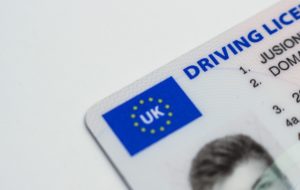In today’s digital age, where personal information is stored and shared online more than ever, the threat of identity theft looms larger than ever before. Identity theft occurs when someone gains unauthorised access to your personal information, such as your credit card details, or other sensitive data, with the intention of using it for fraudulent purposes. The consequences can be devastating, ranging from financial loss to damage to your reputation. However, with awareness and proper precautions, you can significantly reduce your risk of falling victim to this cyber-crime. In this blog, we’ll explore what identity theft entails and provide you with practical steps to protect yourself.

Understanding Identity Theft
Identity theft is a multifaceted crime that can take various forms, including:
- Financial Identity Theft: This involves the unauthorised use of your financial information, such as credit card numbers or bank account details, to make fraudulent transactions or purchases.
- Criminal Identity Theft: In this scenario, someone assumes your identity when interacting with law enforcement or authorities, often to avoid arrest or prosecution for their own crimes.
- Medical Identity Theft: A lesser-known form, this occurs when someone uses your personal information to obtain medical services or prescription drugs, potentially leading to incorrect medical records and billing issues.
- Synthetic Identity Theft: Here, thieves combine real and fake information to create a new identity that’s difficult to trace back to the original victim, making detection and prevention more challenging.
Prevention Strategies
Taking proactive measures to protect your identity can significantly reduce your risk of falling prey to identity theft. Here are some effective strategies:
- Secure Your Personal Information:
- Shred sensitive documents before discarding them.
- Only share personal information when absolutely necessary and with trusted sources.
- Avoid carrying unnecessary identification documents in your wallet or purse.
- Strengthen Online Security:
- Use strong, unique passwords for all your online accounts and update them regularly.
- Enable multi-factor authentication (MFA) whenever possible to add an extra layer of security.
- Be cautious about the information you share on social media platforms, as cyber-criminals can piece together personal details to build a profile.
- Monitor Financial Statements:
- Regularly review your bank, credit card, and other financial statements for any unauthorised transactions.
- Check your credit reports annually for discrepancies or suspicious activity.
- Beware of Phishing Attempts:
- Be cautious of unsolicited emails, messages, or phone calls asking for personal information.
- Avoid clicking on links or downloading attachments from unknown sources.
- Secure Your Devices:
- Install reputable anti-virus and anti-malware software on your devices.
- Keep your operating systems, apps, and software up to date to patch security vulnerabilities.
- Use Secure Networks:
- Avoid conducting sensitive transactions on public Wi-Fi networks, as they are often less secure.
- Consider using a virtual private network (VPN) when browsing on public networks.
- Protect Physical Documents:
- Store important documents, such as birth certificates and driving licences, in a secure and locked location.
- Review Privacy Settings:
- Regularly review the privacy settings on your social media accounts and adjust them to limit the information visible to the public.
In Conclusion

Identity theft is a pervasive threat that requires continuous vigilance and proactive measures to prevent. By implementing the strategies outlined in this blog, you can significantly reduce your vulnerability to identity theft and safeguard your personal information. Remember that prevention is always better than dealing with the aftermath of a cyber-attack. Stay informed, stay cautious, and stay in control of your identity.



